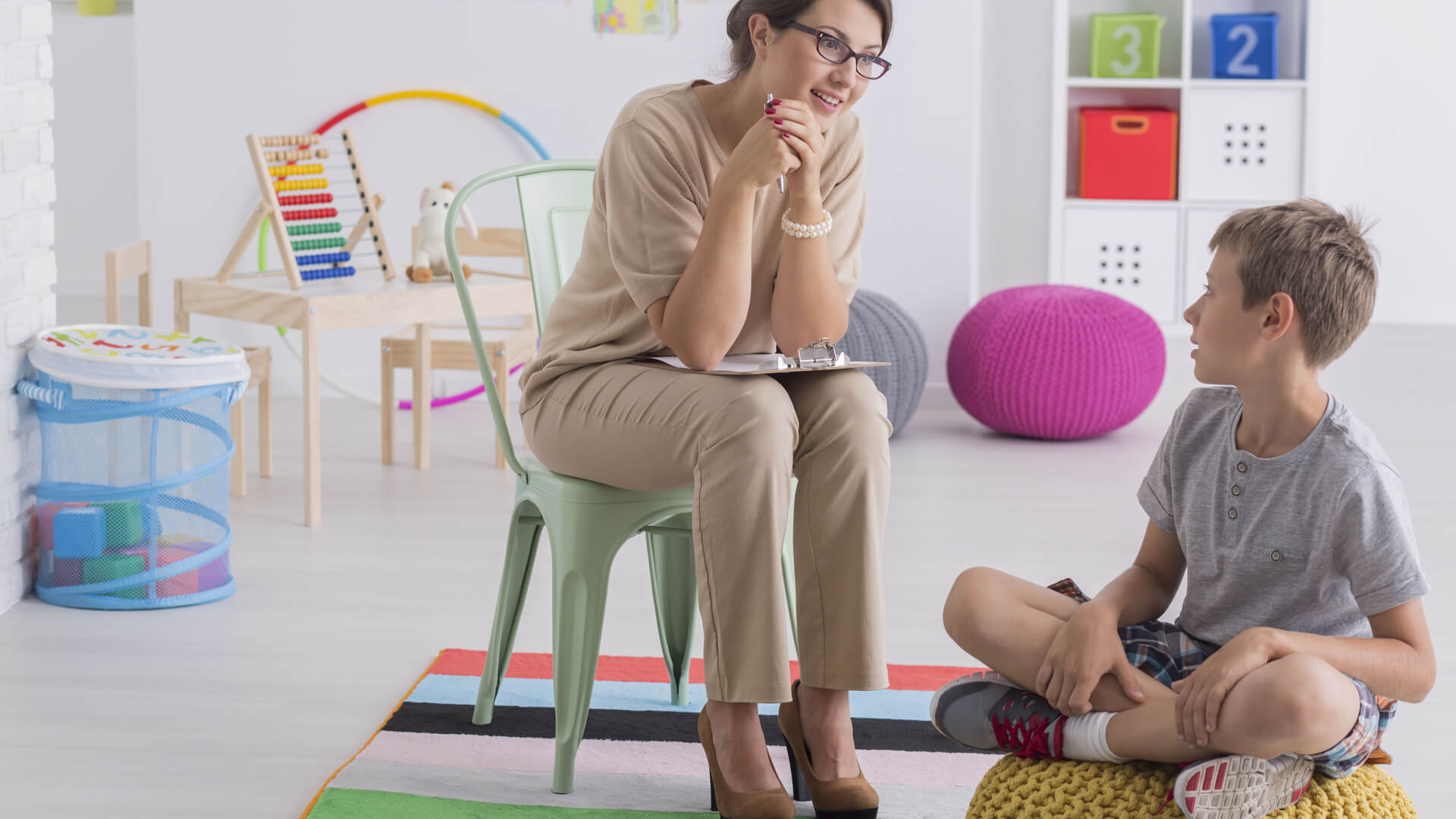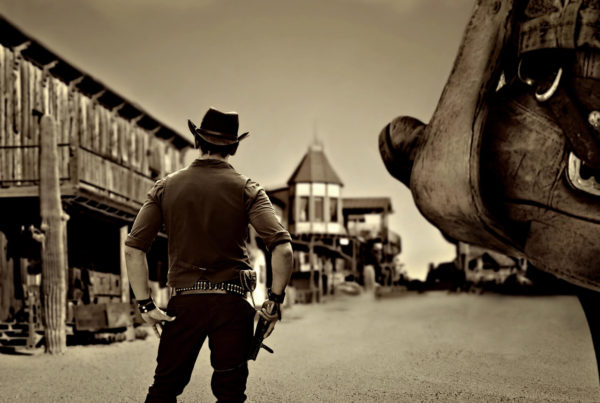Each year, Grafton Integrated Health Network(Grafton) hosts a musical holiday performance in order to celebrate the talents, energy and spirit of our students – children, adolescents and young adults with difficult emotional and behavioral challenges.
This past year was particularly exciting. We had so much enthusiasm from our students and a large audience in attendance. Each class joined in and every student took a turn at the microphone. One of our young performers became nervous as he walked on stage. Seeing the lights and crowd, he became reluctant to participate. At one point, he became so agitated, he began swinging his arms aggressively, striking his teacher and a fellow student. In many settings, this child would have been immediately removed and might have been physically restrained.
Instead, the Grafton staff de-escalated the situation by using a trauma-informed approach. They used soft materials to protect the client as well as themselves. They spoke calmly and introduced distraction techniques to resolve the situation. And the show went on.
Grafton prides itself on giving our students more mainstream experiences like this holiday performance, talent shows, and graduation ceremonies. And we have been very successful with orchestrating these activities without incident. But an occurrence like this doesn’t come as a surprise to us, either. The behavior of our students is unpredictable because we serve the most challenging clients, many of whom have a complex, co-occurring diagnoses. Our staff is trained to handle situations like the one described above with respect and dignity to those we serve.
But it wasn’t always this way.
The Journey to a Trauma Informed Approach
Fourteen years ago, this calming, de-escalating approach would not have been our response. Chances are this child would have been restrained, and possibility isolated through seclusion. At that time, Grafton had over 6,600 cases of restraint reported. We knew that just wasn’t acceptable. So in 2004 Grafton’s then-CEO, Jim Gaynor, issued a directive: create a new model of care that reduces restraint and seclusion without compromising client or employee safety.
We knew that the first step on our journey was developing alternative methods that would first and foremost keep our staff safe. If they were practicing a method that gave them a secure feeling, that would free them to be kind, nurturing and comforting. We knew that once staff weren’t fearful of injury, then they could be open to new way of de-escalating harmful behavior. To best achieve that, we knew those alternatives hadto be trauma-informed.
A trauma-informed approach is built on a thorough understanding of the profound neurological, biological, psychological, and social effects of trauma, coupled with an appreciation for the high prevalence of trauma experiences (Jennings 2004). It is a multilevel approach to treatment that begins with physical and emotional safety provided by a caregiver.
The Impact of Trauma on Children & the Benefits of a Trauma-Informed Classroom
Studies estimate that nearly 50% of U.S. children have experienced at least one potentially traumatic “adverse childhood experience,” or ACE. For individuals that have experienced traumatic events, such as violence, victimization, physical or sexual abuse, the impact of re-experiencing that trauma can be devastating. Children that have experienced trauma may act out in negative ways when placed in stressful, or “trigger” situations – for example, entering a brand new classroom with a new teacher at the beginning of a school year. Behaviors don’t just arise; they are an indication that the child is trying to communicate something, but is struggling. It may result in what often looks like a “meltdown.” When these outbursts occur in the classroom, teachers with trauma-informed training shift their mindset from “what is wrong with this child?” to “what has happened to this child to make them act out in this way?”
By providing a safe trauma-informed environment, children will be open to altering behavior, considering new ideas, and accepting help instead of worrying about their survival.
Fall-Hamilton Elementary School in Nashville, TN, is a wonderful example. It is in the center of a changing neighborhood in which many students are being displaced. In Nashville, 60% of children have had an adverse childhood experience. To better support the entire community, Principal Mathew Portell and his team took proactive steps to ensure the needs of students and teachers were being met by adopting a trauma sensitive approach.
Unlike many mainstream schools, Fall-Hamilton doesn’t expect children to leave their problems, struggles and fears at the door. Understanding that students are still developing both emotionally and cognitively, Principal Portell wanted to create an environment where they feel safe to do just that. And creating that environment starts by giving the teachers the support they require to meet the basic needs of the children.
By implementing a social and emotional learning curriculum, adapting the physical space of the school and building strong one-on-one relationships with students, Fall-Hamilton has experienced tremendous results. Since 2015, behavior infractions leading to referrals are down 76%. In addition, Fall-Hamilton outperformed peer schools on the Achievement Network’s English language arts measures. In 2017, 98% of students at the school felt there was an adult at school who cares about them.
Isn’t that what we are all seeking – the ability to feel safe and cared for? That is the exact philosophy that Grafton embraced when creating its new model of care.
A Philosophy of Comfort versus Control
Grafton’s approach is rooted in the belief physical restraints are not only unnecessary, but also unproductive. We know that all intervention — educational and behavioral — should be built on an approach of “comfort versus control.” This method minimizes the chance for everyday operations to traumatize or re-traumatize clients during service delivery.
Our philosophy of “comfort versus control” required that everyone within the organization understand behavioral intent and client needs. We needed staff to reassure clients, to ask questions instead of making assumptions, to be flexible, to let go of the need to have the “upper hand,” and to treat others with kindness and compassion. And we needed to develop meaningful alternatives to restraint and seclusion. We did this in a few ways:
- Training: We educated all employeeson key concepts — not just trauma-informed care but also conflict resolution, among others — as well as the physical techniques and tools that help manage challenging behavior.
- Equipment: As we implemented a restraint free approach, we quickly learned that traditional blocking materials were not effective – while some didn’t offer adequate protection, others were physically or visually jarring to clients. So we decided to build the materials we needed ourselves. We developed custom-made, soft, cushioned blocking tools that keep both our clients and our staff safe and comfortable. They are not hidden away only to be taken out in moments of crisis. Far from it! You’ll see them all throughout our facilities. Clients enjoy getting creative with them too, decorating them with stickers and glitter. Even using them to build forts.
- Culture change: Once the initiative was announced and after the staff was trained, the real work began. That was when we needed to shift our culture to create an environment focused on comfort rather than control.
None of it was easy. But that last part — culture change — was especially complex. Real change can’t happen as the result of one single person’s vision, no matter his or her title. At Grafton, though the CEO issued the initial call to action, it was the many individuals working with our clients every day who made the vision a reality. Without active and consistent leadership, and the passionate support of people on the ground, there won’t be a lasting effect. But when a group of people is truly open and willing, real and lasting change is entirely possible.
From the beginning, we worked hard to embed the philosophy of “comfort versus control” throughout our entire organizational culture. With collective buy-in and a universal willingness to adopt a new way of doing things, “comfort versus control” became our core operating principle.
Our framework for changing our culture included:
- Setting clear expectations. Our rallying cry, which never wavered, was “Reduce the number of restraints used in our facilities without increasing the injury rate to staff.” This simple edict galvanized our team.
- Communicating those expectations effectively. Publications (policies, memos, guidelines, etc.) and face-to-face meetings were used to help provide education and awareness around the initiative. But the most important communication was walking the talk. Everyone on Grafton’s leadership team truly lived the philosophy and let staff see them doing so. This helped to show our commitment and allowed us to lead by example.
- Sharing ongoing results. Throughout the process, Grafton’s leadership ensured that small, short-term gains were celebrated. These celebrations created a pride of ownership in the employees, which was contagious. As a result, there was increased investment on everyone’s part to keep the momentum going.
- Providing meaningful support: Beyond training, the leadership team provided concrete support, changing their hours to have a presence during all shifts. Additionally, they often went to group homes in the evenings and classrooms during the day. Finally, they made it a point to simply ask employees what they think, how they feel about the transition and how they are handling it.
In the end, the results were more than worth it. Grafton experienced:
- A 99% decrease in restraint frequency
- A 100% reduction in seclusion
- A 97% decrease in staff injury due to restraint
- A 64% decrease in client-induced staff injury
- A 133% increase in client goal mastery from 2003 to 2016
- A savings of over $16 million in lost time expenses, turnover costs, and workers’ compensation policy costs.
With these extraordinary results, Grafton knew it was necessary to share these best practices with other organizations.
The Birth of Ukeru
In 2015, we launched Ukeru Systems as a safe, comforting and restraint-free crisis management technique. Named for the Japanese word for “receive,” the program helps people engage, sense, feel, and thenrespond to what someone is trying to communicate through their actions.
Today, Ukeru has trained more than one hundred organizations on the conceptual and technical elements of the program, and has helped behavioral health providers and schools reduce the use of restraint, seclusion, and injury. Our results show that you caneliminate the use of restraint and seclusion without compromising safety.
These days, I travel the country sharing Grafton and Ukeru’s story. And I’m honest about the fact that it wasn’t easy. Working to minimize restraint and seclusion can sometimes feel as though we are fighting an uphill battle. But there is arguably no battle more worthy of winning. All people deserve to be treated with dignity and respect… or, to put it another way, everyone deserves his or her own big moment on the holiday musical stage.






